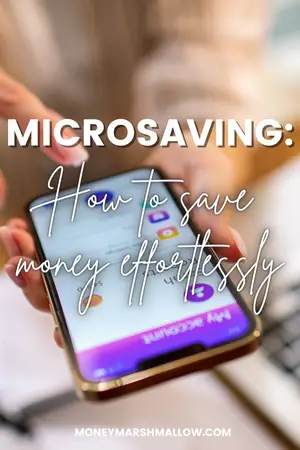Are you looking for a way to effortlessly grow your savings while still enjoying life’s little luxuries? Look no further, because microsaving is here to change the way you save money. In this article, we will explore the concept of microsaving, how it works, and provide practical tips to help your money grow effortlessly.
What is microsaving?
Microsaving is a simple and effective strategy that enables you to save small amounts of money with each card transaction. It’s like a digital piggy bank that automatically sets aside a portion of your spending. For example, whenever you buy a coffee for £3.50, you can round it up to £4 and save the extra 50p. These small increments quickly accumulate over time, helping you grow your savings effortlessly. Microsaving allows you to build a financial cushion without making significant sacrifices.
This saving method is beneficial for individuals of all income levels and financial situations. However, It is especially advantageous for those who:
- Have limited or irregular income: By saving small amounts regularly, you can gradually build up your savings over time, regardless of the income level.
- Struggle with traditional savings methods: Microsaving provides a saving and budgeting alternative for individuals who find it challenging to save large sums of money at once.
- Prefer gradual savings: If you prefer a gradual and consistent approach to saving, microsaving allows you to save small amounts with each transaction, making it a suitable option.
- Want to automate savings: Microsaving is ideal for those who appreciate automation. By setting up automatic transfers, you can effortlessly save without having to remember to do it manually.
- Seek simplicity and convenience: Microsaving apps and integrated banking services make saving easy and convenient, requiring minimal effort on your part.
Microsaving is a versatile savings approach that can benefit anyone who wants to save money gradually, effortlessly, and in a way that fits their lifestyle and financial goals.
How to start microsaving
Starting microsaving is easy and can be done through your bank account or by using dedicated money management apps. Here are a few simple steps to get you started:
Check if your bank offers microsaving or ’round-up’ services. If they do, log in to your online banking and set up automatic transfers to your savings account with each transaction.
Alternatively, explore savings and investment apps with automated features like InvestEngine, Chip, or Plum. Once you’ve downloaded an app, connect your accounts, and customise your saving preferences.
Decide on the amount you want to save per transaction. For example, you can choose to save 50p every time you spend £10.
Enable automatic savings or investment features. For instance, you can round up your purchases and transfer the difference to your savings account.
Monitor your savings progress through the app or online banking platform to stay motivated and track your growing savings.
Adjust your microsaving preferences as needed, such as increasing the savings amount or exploring additional features offered by the app or your bank.
Starting microsaving through your bank or using a dedicated savings app gives you control over your savings journey and makes the process seamless and convenient.
Maximise your savings with investments
As you might already be aware, keeping your money in a regular account over the long term isn’t a very wise choice due to the impact of inflation. A high-interest savings account generally offers a better alternative, but it still rarely proves sufficient to keep pace with inflation. Therefore, if your intention is to foster the long-term growth of your savings, considering investment options is highly recommended. As a microsaver, you have the opportunity to automate the transfer of accumulated funds into your selected investment fund.
For instance, you can begin by setting up a savings goal, perhaps £50, which you’ll hold within your savings account. Once this goal is met, you can channel any surplus amount directly into your chosen investment fund. Many investing apps let you automatically invest your chosen sum on a weekly, bi-weekly, or monthly basis into your fund. This type of automated investing is an excellent choice for those new to investing, as it provides a simple, low-risk method to consistently invest smaller amounts and gradually build your wealth.
Just remember that microsaving into funds is a long-term savings strategy, as fund values can fluctuate in the short term. If you anticipate needing the saved funds within a year or two, it is advisable not to invest them in funds, but rather keep them in a regular savings account.
Related: Investing for Beginners: How to Start Investing in the UK
Conclusion: Microsaving
In conclusion, microsaving offers a simple and automated way to save money effortlessly. By rounding up your card purchases, microsaving allows you to accumulate funds gradually without even realising it. It’s a hassle-free method that seamlessly integrates with your everyday transactions.
Moreover, microsaving opens doors to potential investment opportunities in order to grow your money further. Rather than simply transferring your savings to a traditional savings account, you have the option to automatically redirect them to an investment account. By exploring smart investment options, you can maximise your returns and work towards long-term financial goals. Remember to research and seek guidance when needed to make informed investment decisions.
Start your microsaving journey today and experience the power of small, automated steps towards your goals. Whether through dedicated bank services or savings apps, embrace microsaving as one of your savings tools to secure a brighter financial future.

